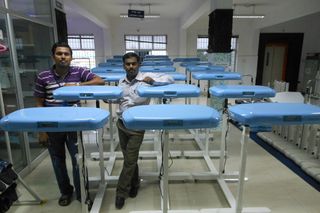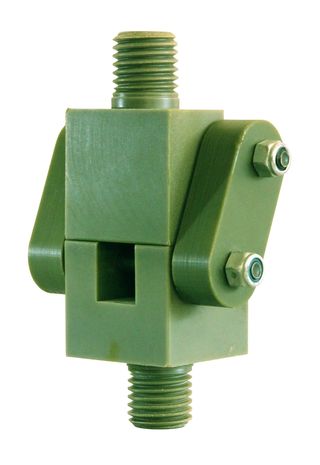'Social Impact Design' Merges Style With Mission (Gallery)
The National Endowment for the Arts (NEA) contributed these images as part of a partnership between NEA and Live Science's Expert Voices: Op-Ed & Insights.
For people who face medical emergencies or lose a limb while also struggling with poverty, quality solutions are not easy to come by — and few are pretty. Now "social impact design" firms are addressing that gap. Design firm D-Rev, which has received support from the NEA, is one such company, launching a phototherapy device called Brilliance to treat jaundice in newborns and the ReMotion Knee, a prosthetic knee. The ReMotion emerged from graduate work at Stanford University, and through trials in India, has been refined to be quieter, lighter and more efficient. The Brilliance device, has helped 28,000 newborns and prevented more than 550 infant deaths. Both devices show that advanced design can be for everyone, not only those with financial wealth. (Credit for all images D-Rev.)
Set up

A D-Rev employee working on Brilliance in India.
Ready to use

Phoenix Medical Systems staff with the first batch of Brilliance devices manufactured. The first 70 devices sold out in four weeks.
Child with new technology
Sign up for the Live Science daily newsletter now
Get the world’s most fascinating discoveries delivered straight to your inbox.

Brilliance phototherapy units helped 28,000 newborns and prevented more than 550 infant deaths. This Brilliance phototherapy unit is being used to treat a severely jaundiced newborn at a public hospital in India.
An early attempt

An early iteration of the ReMotion prosthetic knee.
A newer knee

D-Rev continues to improve the design of the ReMotion using feedback from users, having gone through three versions of the prosthetic knee. This is the latest iteration of the ReMotion.
A success story

Nesa, a prosthetic technician and a ReMotion user, rides his motorbike in Bali, Indonesia.
Read the full NEA article, Focusing on the Impact.
Follow all of the Expert Voices issues and debates — and become part of the discussion — on Facebook, Twitter and Google+. The views expressed are those of the author and do not necessarily reflect the views of the publisher. This version of the article was originally published on Live Science.
Most Popular


